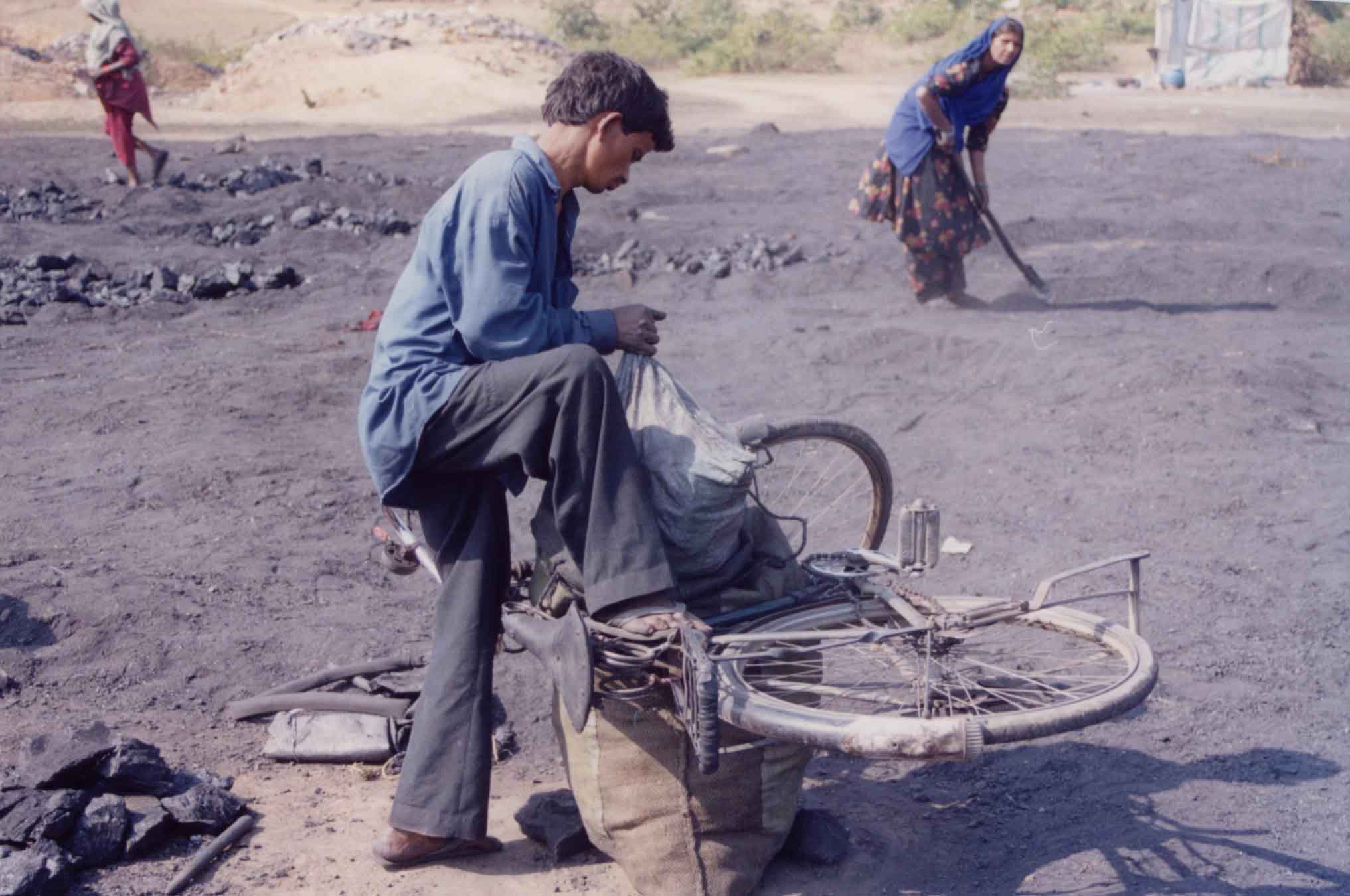 |
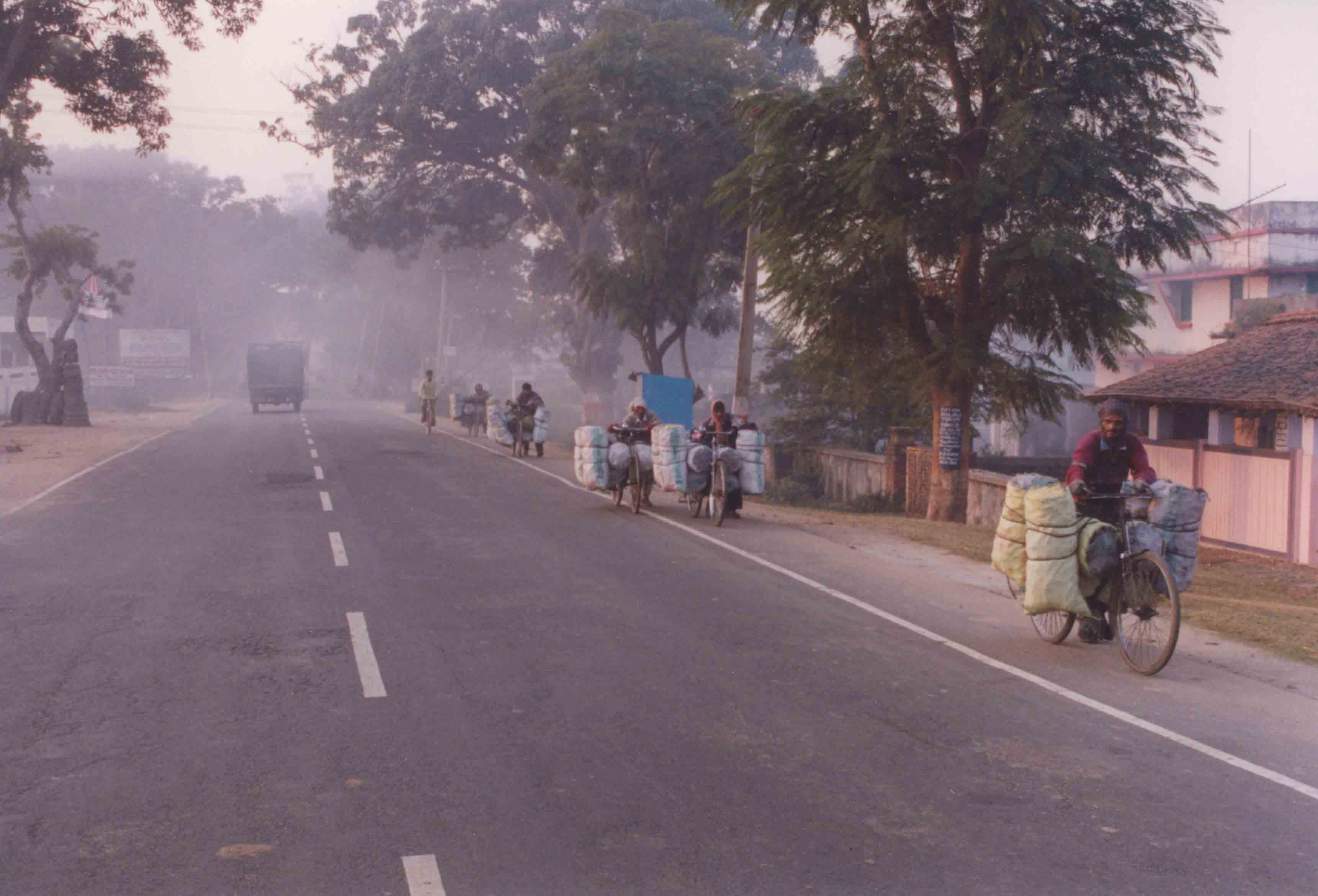 |
| Loading coal from an informal village mine producing up to 10 tonnes per day. | Coal cycles approaching Hazaribagh, Jharkand in the early morning to sell their coal for ~US$2 per load. It takes about 3 hours to get from the village mines to the town. |
THE DELIVERY OF COAL BY CYCLE
One of the more interesting sights around the Indian coalfields is that of coal-loaded cycles being pushed by individuals, either alone or more commonly in groups of 5-8. The coal they carry could be scavenged from nearby open cut mines or artisanally mined. The coal carried on cycles is meant for delivery to domestic consumers in the towns and is also sold to small commercial enterprises such as tea stalls, brick kilns and even sponge iron plants. In 2003, we carried out a survey of how much coal is delivered by cycle to Hazaribagh in Jharkand from which we estimated that ~ 2.5 million tonnes of coal gets distributed this way annually just in eastern India. In 2012, we surveyed the cycle delivery of coal again, this time also looking at the backgrounds of these cyclists and their incomes, combined with a detailed household survey in selected villages to estimate the contribution of coal to rural livelihoods. To put it briefly, we estimated that the size of the coal cycle economy has increased to ~ 3.7 million tonnes, and many of the coal cyclists are quitting agriculture altogether in favour of pushing coal-laden cycles. The cycles now carry bigger loads and are better reinforced with steel plates than they were before, and the activity now contributes a significant part to the livelihoods of these people.
Some of the 'sights' are shown below but, if you want to read more look up our 2013 report "Revisiting the coal cycles in Eastern India". We also wrote a paper on the "coal cycles", that was published by TERI in their "Resources, Energy and Development" Journal, Vol. 2, No. 2, September 2005, pp. 93-105.
 |
 |
| Loading coal from an informal village mine producing up to 10 tonnes per day. | Coal cycles approaching Hazaribagh, Jharkand in the early morning to sell their coal for ~US$2 per load. It takes about 3 hours to get from the village mines to the town. |
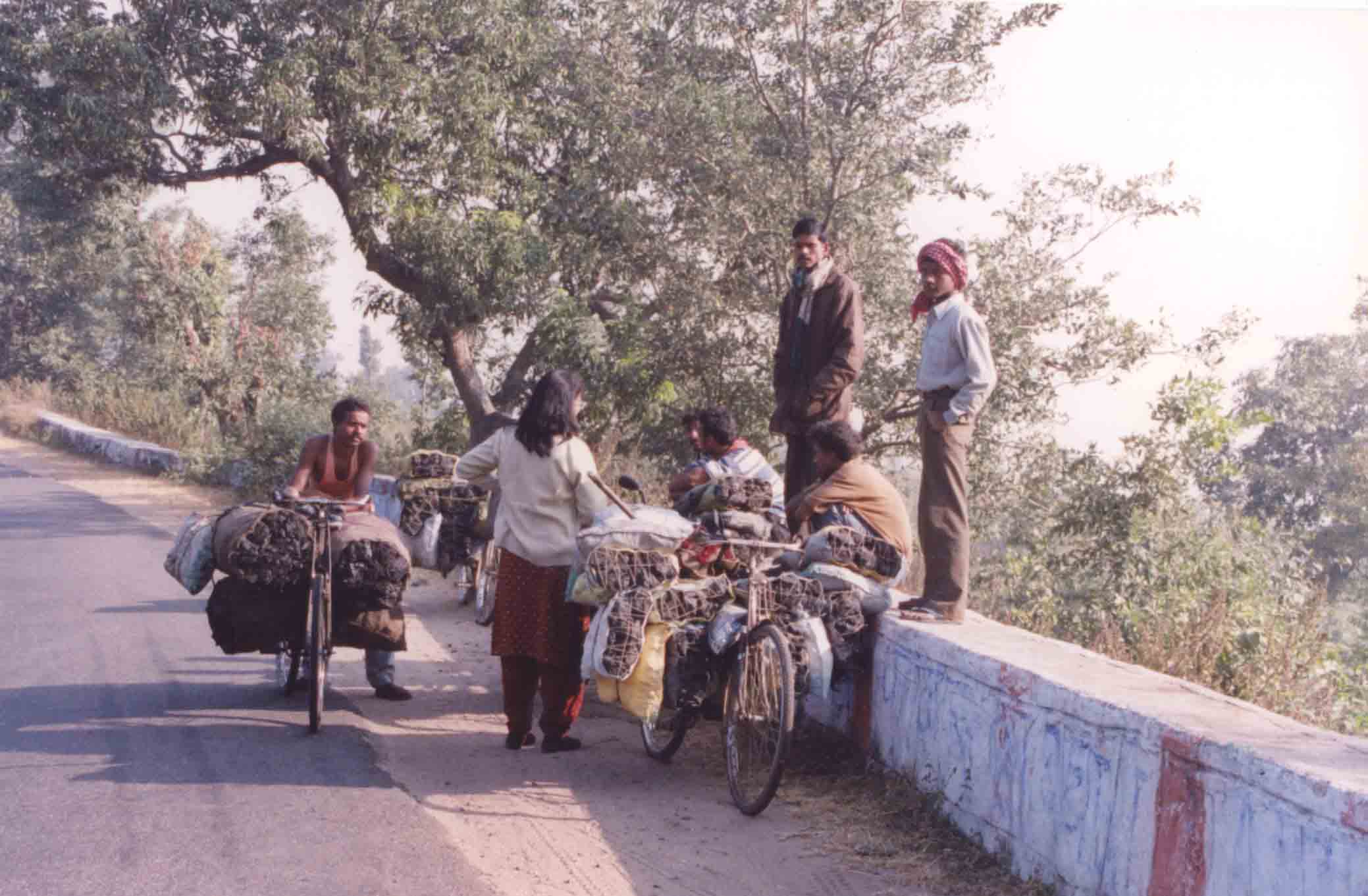 |
Kuntala talks to some cycle wallahs resting at the
top of a
big hill. On the steep parts, they have to help push each other up. These cycle wallahs take 2 days to get to their destination (Ranchi, capital of Jharkand, 40-50km away). They get a higher price for their loads in the big city and come back by Trekker (a large jeep-like vehicle used for public transport) which carries their cycles on top. |
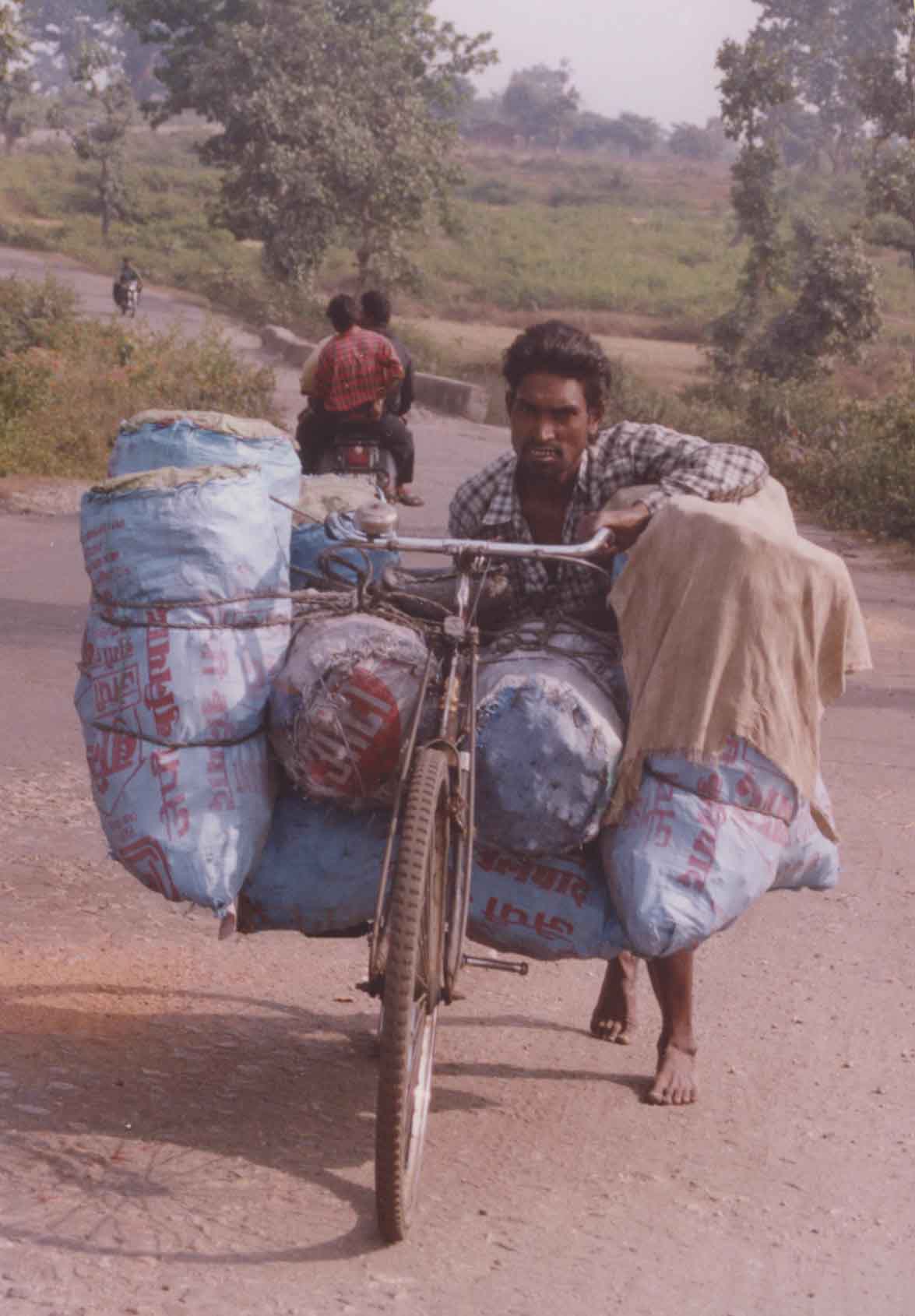 |
 |
| A full load ~ 200 kg |
This is coked coal - the 3 cycle wallahs are pushing the equivalent of what was once 1 tonne coal. Coke is preferred if used as cooking fuel. |
 |
 |
| Small scale open-cut mining by villagers in Raniganj | The entrance cutting into a shallow underground mine. |
 |
 |
| Heap coking at the mine surface - source of high pollution | Coking coal outside cycle wallah's home |
The
two mining activities pictured above occur on village land usually on
the fringes of the coal deposits (for a short video taken down one of
these mines and delivery by cycle, click on "Video"). However,
villagers also extract coal from abandoned mines and even from
thin seams on working formal mines.
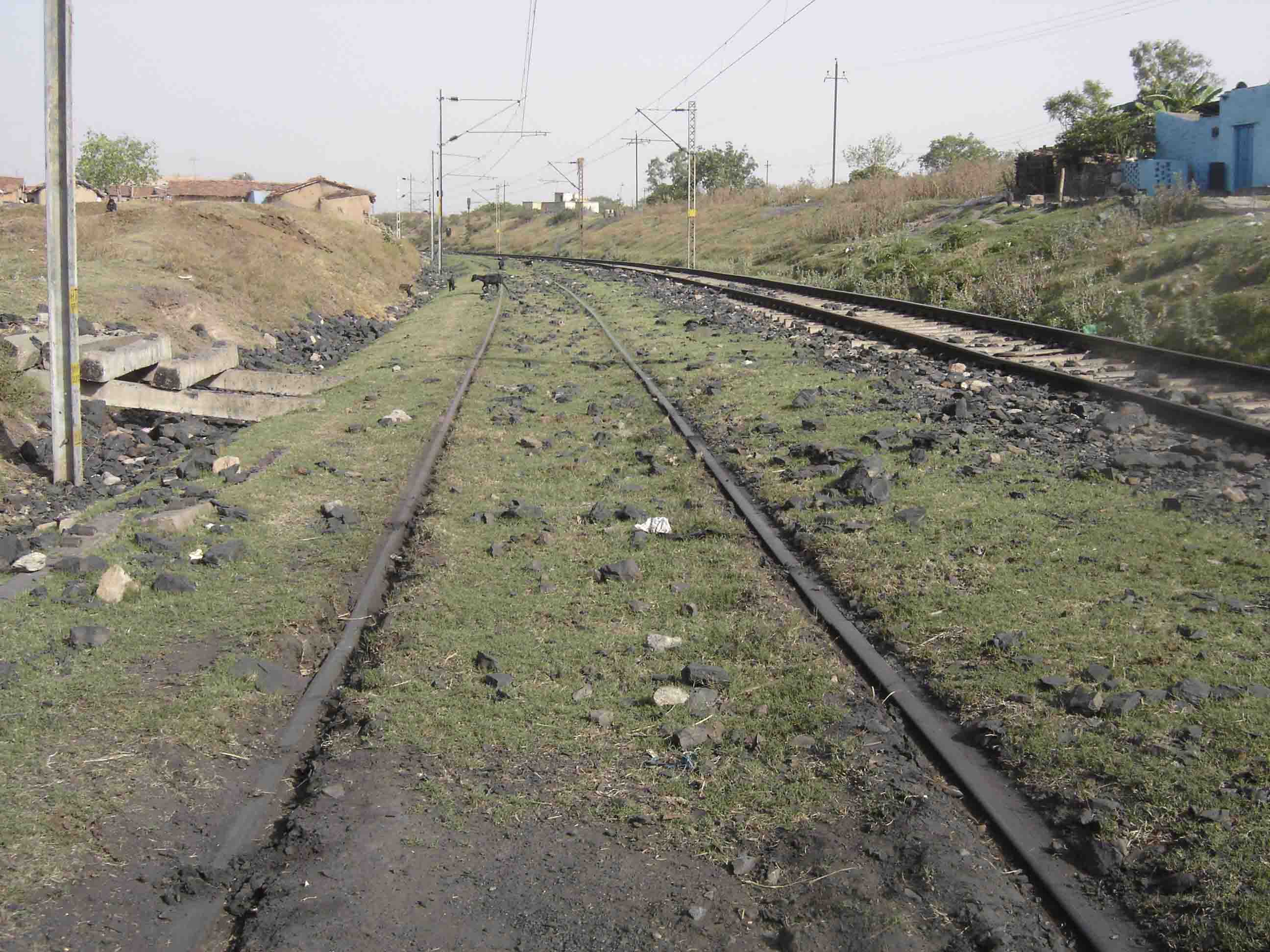 |
Another
source of this informal or illegal coal is stealing and scavenging from
the regular coal supply routes.
As the heavy coal trains leave the loader and grind slowly up the grade, young boys jump on board and throw out lumps of coal which is picked up in the evening. Maybe 10 tonnes of coal per night on this rail section can be stolen this way. This coal largely gets transported by trucks for bulk delivery to industry rather than by cycle |
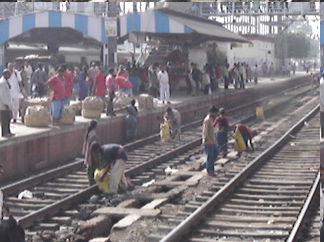 |
Here, 'empty' coal trains frequently stop at a major junction. Young boys climb into the wagons and throw out remnant coal which is then gathered by family members.
This type of scavenging was common in NE England in the 19th C
|
We, together with a colleague, Justin Imam, carried a further and more detailed survey in 2012 which showed this activity was alive and well and probably expanding. We also obtained information as to the social context of these cycle wallahs. Of 65 interviwed, only one had an asset other than his bike and that was a mobile phone and all but two families used the fields as their toilet.
In the photos below we can see the heaps of coal being coked in what would have been an idyllic rural scene in the North Karanpura Valley and cycle-wallahs, loaded with the coked coal, taking refreshment at a teahouse.
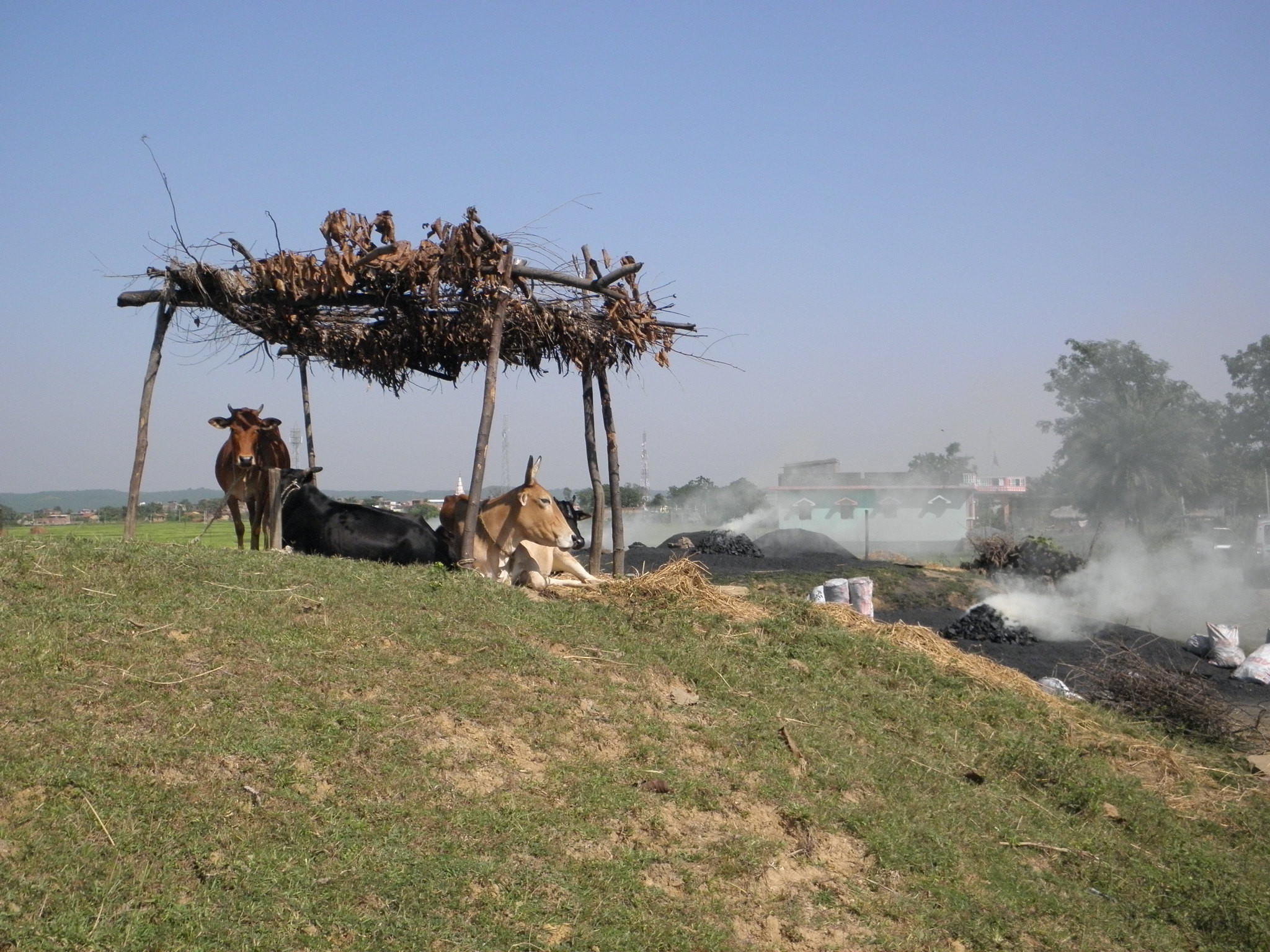 nbsp;
nbsp;
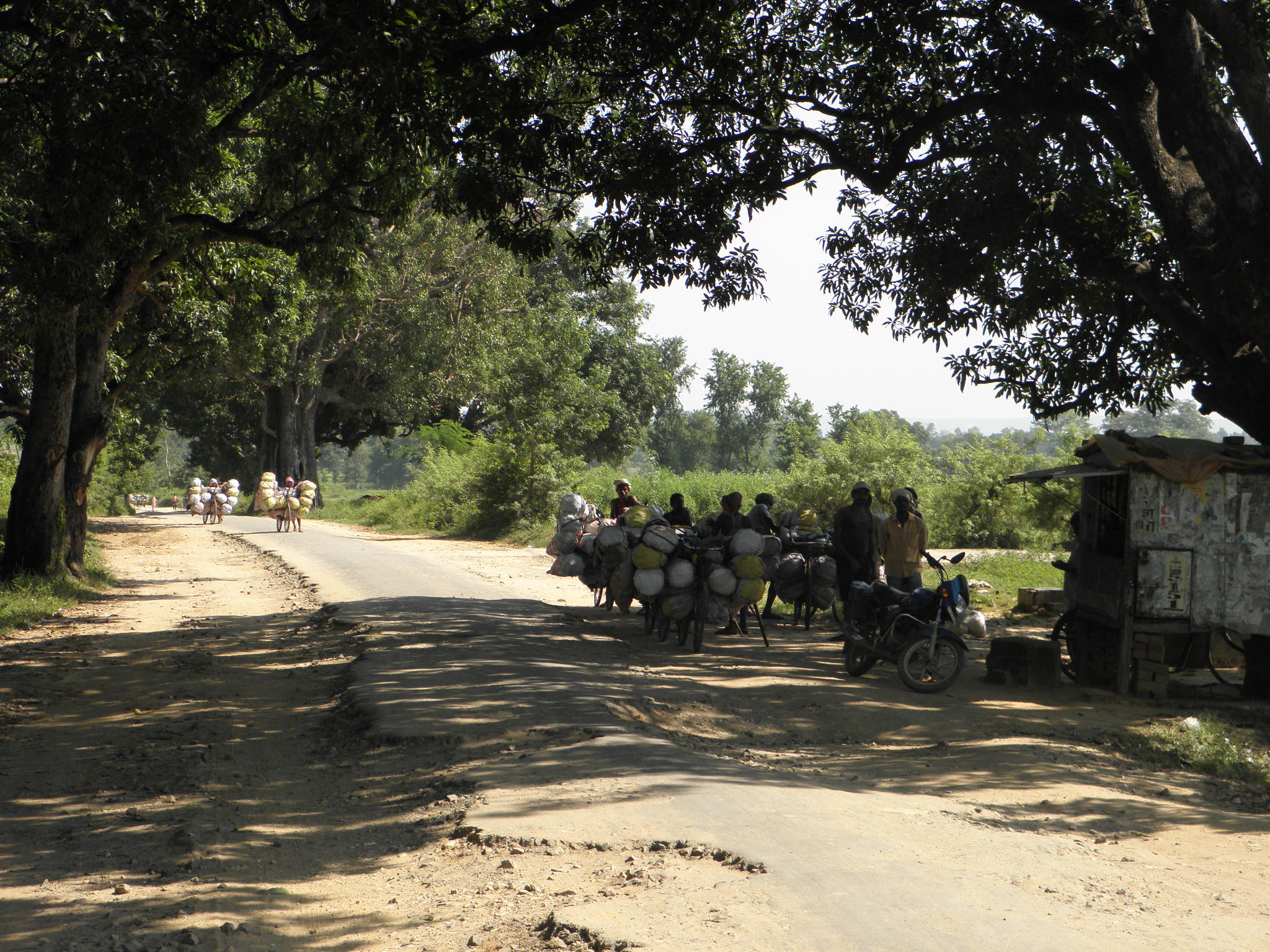
The information can be found in: Revisiting the coal cycles in Eastern India
Some more information on informal mining can be found in the following papers "Informal mining in Eastern India", "Artisanal and small-scale mining in India", "Informality in mineral resource management in Asia" and "A critique of resource curse and conflict theories"